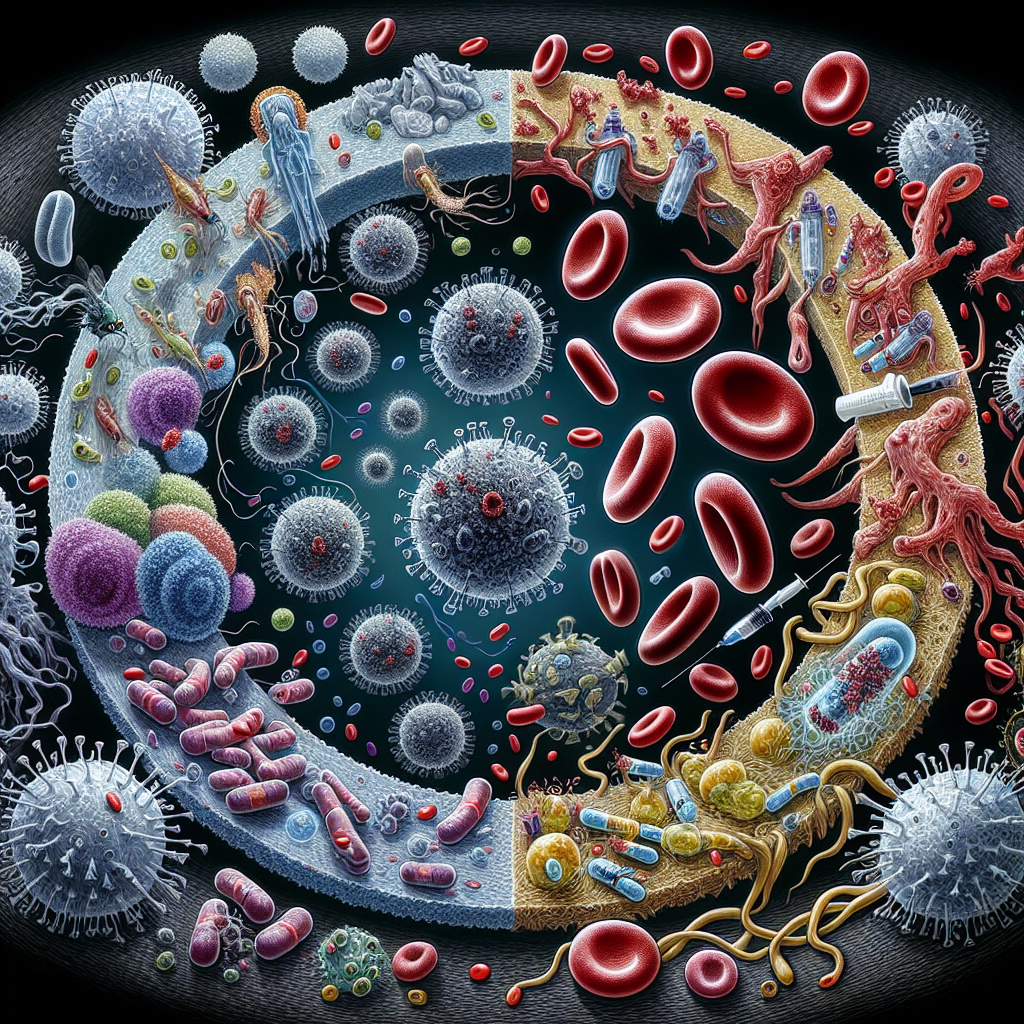===INTRO:===
In our quest for robust health, the role of microbes, particularly viruses and bacteria, often stands in stark contrast to the perception of them as mere pathogens. The impact of viruses and bacteria on the immune system is both profound and complex, challenging our understanding of immunity itself. Many individuals grapple with the fear of infections while simultaneously seeking insights into how these microorganisms shape defense mechanisms. By delving into this intricate relationship, we can uncover both the threats and benefits posed by these invisible entities.
Understanding the Complex Relationship Between Microbes and Immunity
The human immune system is an intricate web designed to distinguish between friend and foe, a task complicated by the presence of numerous microbes. While it’s commonly understood that viruses and bacteria can cause disease, they also play essential roles in the immune landscape. Specific interactions between these microbes and immune cells can lead to a heightened sense of alertness in the immune system, equipping it with greater knowledge of potential threats. This duality is a testament to the evolutionary arms race between hosts and pathogens, where both parties have adapted to survive.
One of the most intriguing aspects of this relationship is the concept of microbial diversity. A balanced microbiome—comprising beneficial bacteria—influences how the immune system reacts to harmful invaders. For instance, certain gut bacteria produce short-chain fatty acids that modulate immune responses, fostering an environment where T-cells can thrive. This dynamic interplay showcases that not all microbial interactions are detrimental; instead, many are essential for training the immune system to respond efficiently to infections while avoiding overreactions that could lead to autoimmune disorders.
Furthermore, exposure to various viruses and bacteria during formative years can fundamentally shape an individual’s immune profile. This phenomenon, known as "immune programming," suggests that early microbial encounters can influence susceptibility to diseases later in life. For example, children raised in environments rich in diverse microbial exposures are often found to have a lower incidence of allergic and autoimmune diseases. Understanding these nuances provides insight into preventative health strategies, allowing for a more informed approach to enhancing immunity through targeted exposure.
The Impact of Viral and Bacterial Interactions on Immune Response
Viral infections, particularly those caused by respiratory viruses, play a significant role in shaping the immune response. When a virus enters the body, it triggers a cascade of immune activities, including the activation of innate immune cells like macrophages and dendritic cells. These cells are not merely defenders; they also serve as educators, informing the adaptive immune system about the viral threat and facilitating the generation of specific antibodies and T-cells. Moreover, some viral infections can induce long-term immunity through memory cells, which remain vigilant against future infections.
On the other hand, the interactions between bacteria and the immune system can be multifaceted. For instance, certain bacteria can elicit pro-inflammatory responses that may be beneficial in the short term but detrimental if unchecked. Chronic bacterial infections can lead to a state of immune exhaustion, where the immune system becomes less efficient at responding to new threats. Interestingly, some bacteria have evolved mechanisms to evade detection by the immune system, underscoring a sophisticated level of interaction that can either bolster or hinder immune capabilities.
Additionally, emerging research highlights the phenomenon of viral-bacterial co-infections, where an individual is simultaneously infected with a virus and a bacterium. This interplay can significantly alter the immune response, often leading to more severe illness. For example, co-infection with influenza and pneumonia-causing bacteria increases morbidity and mortality rates, demonstrating how viruses can pave the way for bacterial complications. Understanding these interactions not only aids in developing effective treatment strategies but also emphasizes the need for a holistic approach to managing infections.
===OUTRO:===
The exploration of how viruses and bacteria impact the immune system reveals a captivating and complex narrative that challenges conventional wisdom. By acknowledging the nuanced roles these microorganisms play, we can better appreciate the delicate balance of our immune responses. This knowledge empowers individuals to take proactive steps in maintaining their health, from enhancing their microbiome diversity to understanding the implications of viral and bacterial interactions. As we continue to unravel the secrets of our immune system, the insights gained could revolutionize our approach to health and disease prevention. So, whether through dietary changes, lifestyle adjustments, or informed healthcare decisions, embracing this knowledge is the key to unlocking a healthier future.
Essential Strategies for Preventing Viral Infections EffectivelyEssential Strategies for Preventing Bacterial InfectionsUnderstanding the Mechanisms of Virus and Bacteria TransmissionRelevant LinkRelevant LinkRelevant LinkUnderstanding Lower Back Pain Linked to COVID-19: Insights and ManagementUnderstanding COVID-19: Navigating Loss of Appetite ChallengesUnderstanding COVID Laryngitis: Symptoms, Causes, and TreatmentRelevant LinkRelevant LinkRelevant Link
